If your baby awakes during the course of sleep, crying, and experiencing a flush, it is important to check their temperature to determine if they are suffering from a fever. In this article, ArkLinen Store will talk about how to dress a baby with a fever at night and enumerate reasons your baby could be suffering from an illness known as a fever.
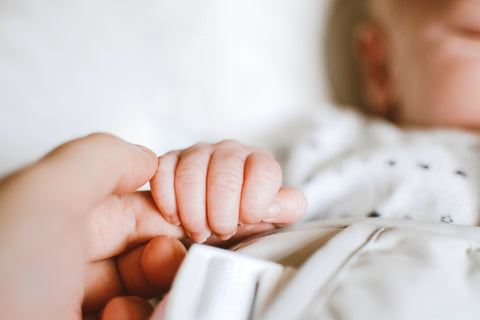
Although fevers aren't a cause for concern, there may be some cause underlying. Infants younger than 3 months have a higher chance than children of older ages to have a reason behind their fever that needs treatment. Infants aged 3 months and older should be examined by a physician promptly for fevers.
Infants aged 3 months and older who have low-grade fevers may be treated at home under appropriate care when no other symptoms arise. Infants who have chronic or high fevers must be examined by a physician.
Understanding Fevers
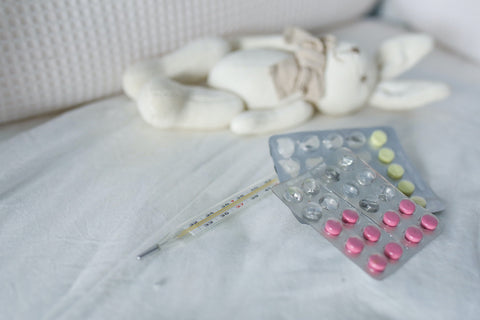
It is crucial to keep in mind that a fever, which is defined in children as the rectal temperature being 100.4°F or higher is a symptom of a disease and not an actual disease in itself. For babies and young children, fever can be an indication of common viral and bacteria-related illnesses like colds, croup, flu, gastroenteritis, and ear infection as well as bronchiolitis and UTIs.
Although fever can be a bit obnoxious, you should be aware that it's an essential part of your human body's immune response. It functions as a defense mechanism, by stimulating the creation of white blood cells (such as T-cell lymphocytes) that attack, control, and neutralize an infection.
One of the things that happen during sleep is you experience more of a fever response. This means that even when temperatures rise the body is more alert to fight infections.
Why do Infants Get Fever?
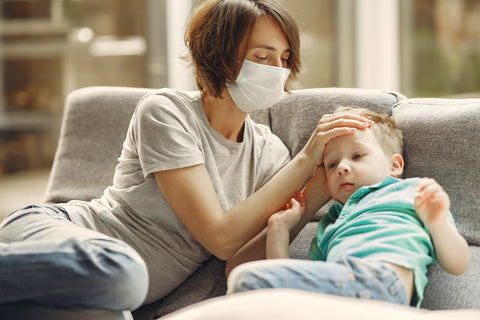
They are usually a sign of a bigger medical condition. The baby may develop an illness due to a variety of causes. You’re baby might get an infection that is viral or an infection caused by bacteria. Certain vaccinations may cause your baby to catch a fever. You should also consult a doctor if you’re baby has a fever to see if he/she has another medical condition. For children, the most common causes of fevers in children include respiratory ailments like colds and ear infections.
How to Dress an Infant With a Fever in the Evening
It is essential to wrap your child in a lightweight dress in the evening if they are having a fever. While your initial instinct might be to wrap your child in a thin blanket in case they're sick, however, this could increase their discomfort.
If the temperature of the room is at a comfortable temperature (between 70°F to 74°F) it is best to dress your child in light clothes. Forcing a sweat is not an effective method in treating fever and it could cause difficulty sleeping.
If you’re looking for different types of cotton sheets, ArkLinen Store offers a variety of products. We have a 200-thread count satin stripe fabric oxford pillowcase and luxury duvet sets which is smooth and won’t harm your facial and body skin features. We also have king-size sheets sets or patterned bed sheets which are the best fabric to sleep on. We also offer a cotton-filled comforter which is the best breathable comforter out there in the market.
How to Manage the Fever
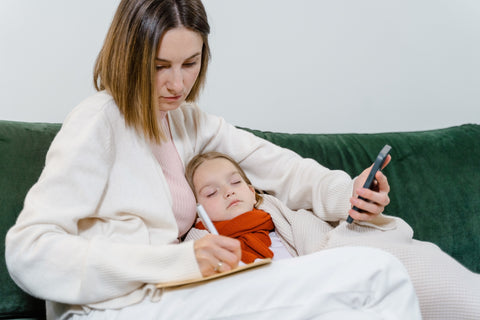
A slight increase in temperature in an infant younger than 3 months old may not require a visit to a doctor. It is possible to manage this fever on your own. You can use acetaminophen. When your baby is older than 3 months, you are able to give them a small amount of acetaminophen for children (Tylenol).
Doses are generally determined by weight. Your doctor may suggest that you weigh your child in the event that they've not been recently weighted or had an increase in growth recently.
If your infant isn't uneasy or fussy due to their fever, you might not require any medicine. If you notice a higher fever or other signs that make your baby uncomfortable, medications may help them feel temporarily better.
Dress your child in light clothes and only use a sheet or blanket to keep them warm and cool.
The overdressing of your child could disrupt the body's natural ways to cool down. Also, using linen pillows and linen bedspread can help to keep your baby or child warm and cool despite having a fever.
Maintain your home and the room of your baby cool. This will help to stop them from becoming too hot. Make sure they have a warm bath. Try scrounging your baby's bottom with warm water. (Water is supposed to be warm but not hot to the touch of your arm.) Ensure you are always under supervision when bathing to ensure safety. Beware of using cold water since this can cause body shaking, which could raise the temperature of your baby. Dry your baby right away after the bath and wear light clothes. Wipes or alcohol baths to reduce fevers aren't advised and may cause harm.
In the event of an after-bath, you can use ArkLinen Store’s luxury bath towel sets, luxury bathrobe, luxury bath sheets, and luxury hand towels to keep you or your baby warm after a bath or a shower.
Last but not the least, provide them with fluids. Dehydration can be a complication of fever. Provide frequent fluids (breast milk or formula) and make sure your baby's crying has tears and has a moist mouth and regularly wet the diapers. Visit your doctor's appointment for a discussion on ways you can ensure your child is well-hydrated in case there is a concern.
To obtain the most precise temperature, make use of an electronic multi-use thermometer rectally. Be aware that the rectal temperature will be higher than temperatures recorded using other methods.
How to Measure Your Infant's Temperature in a Rectally-oriented Way
Follow the manufacturer's directions initially and adjust the measurement according to Fahrenheit or Celsius (in order to correctly report the temperature). After that, cleanse the thermometer using soap or rubbing alcohol and cover the entire thermometer with petroleum jelly or another suitable oil lubricant.
Get rid of any clothing or diaper from the bottom of your baby's diaper and lay them on their stomach and place them on a secure and comfy surface, like an infant bed, a changing table, or sitting on the lap of your child.
Your infant should be held in a comfortable place as you take the temperature. Be sure not to let them move around or move around during the procedure to prevent the thermometer from getting further into the rectum of your infant. It is best to have someone help hold the baby still is recommended to avoid injuries.
Switch on your thermometer and insert it just 1/2 inch to 1 inch inside your baby's rectum until the thermometer chirps. (Most thermometers feature a visible mark or safety indicator which shows a safe limit for a rectal insert.)and take the thermometer out with care and make sure to take note of the temperature.
Other devices could give accurate temperature readings to your baby if you use them in accordance with their instructions. Temporal artery thermometers monitor the temperature of the forehead and are not suitable for infants who are less than 3 months of age. Rectal temperatures are recommended for infants at this age.
Tympanic thermometers detect the temperature of a baby's ear and are not recommended for infants aged six months and older.
Here are some other suggestions for taking your infant's temperature:
- Make sure that your thermometer is designated to be used only for rectal purposes and mark it with a label to prevent confusion.
- Don't take your infant's temperature by mouth or under the armpit. These aren't considered reliable for infants and younger children.
- Do not conclude that your baby is feverish if you feel warm when touching their forehead. You require a precise digital thermometer reading to establish the severity of the fever.
- Do not use mercury-filled thermometers. They can cause mercury exposure should they break.
When to Call a Doctor?
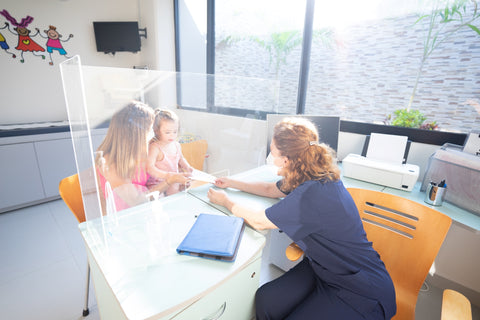
Monitor your infant's temperature over the course of illness and be aware of any other signs and behaviors to determine if you need to consult your physician. Contact your baby's doctor or seek medical attention if your infant who is less than 3 months old is prone to any temperature increase or if your baby between 3-6 months old, has rectal temperatures in the range of 102°F (38.9°C) or more.
Your child whos aged 6 to 24 months is experiencing a fever of 102°F (38.9°C) longer than a day or so without any other signs or if they experience a fever that lasts longer than 24 hours, or is frequent every day.
Seek medical attention if they're often upset (very anxious) or irritable (weak and more exhausted than normal) or if your infant's temperature does not drop after an hour less after receiving a dose of medication. They may develop other symptoms such as the appearance of a rash, no appetite, or vomiting. And lastly, they're dehydrated (not producing tears and spit or the normal amount that wet diapers produce).
Conclusion
The treatment of fever in an infant can be different depending on the aging infant and the signs that accompany the fever. Newborns should be examined by medical professionals immediately if they experience fever and older children can receive treatment at home in the event that they experience a fever.
Keep in mind to always consult with your doctor prior to giving any medicine to your child, or see a doctor in the event that your child has an elevated temperature or if the fever persists for more than a couple of days.
ArkLinen Store hopes that your newborns won’t catch a fever or any medical conditions and wishes them to grow healthy and strong. We at ArkLinen Store provide quality products that are used by hotels, restaurants, and households since 2020. We can offer bathroom robe, washcloths, handtowels, bathroom sheets, and linen napkin which you can use from your bathroom, kitchen, and to your bedroom.

